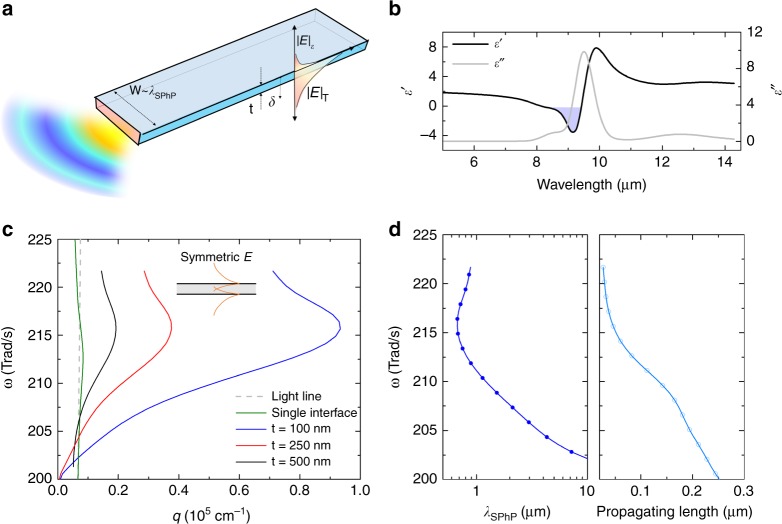Fig. 1.
Anisotropic nanoribbon for localised resonance by polaritons. a Schematic illustration of a long nanoribbon with rectangular cross-section with thickness (t) and width (W). Here, t is thinner than the skin depth (δ), leading to significant transmitted intensity of the electromagnetic wave perpendicular to the ribbon compared with the absorbed intensity . Otherwise, the optical response in the parallel direction to the plane would yield higher emission because the cross-sectional length scale with the integer multiples of half wavelength supports the localised resonance modes, enhancing the absorption cross-section. b Plots of the real and imaginary permittivity of SiO2. The region of the Reststrahlen band is coloured. c Dispersion relation of SPhP supported by thin films of different thickness, calculated from the approximate solution Eq. (1). The energy range is within the Reststrahlen band. d SPhP wavelength and propagating length for a 100 nm thick thin film, corresponding to the dispersion curve

